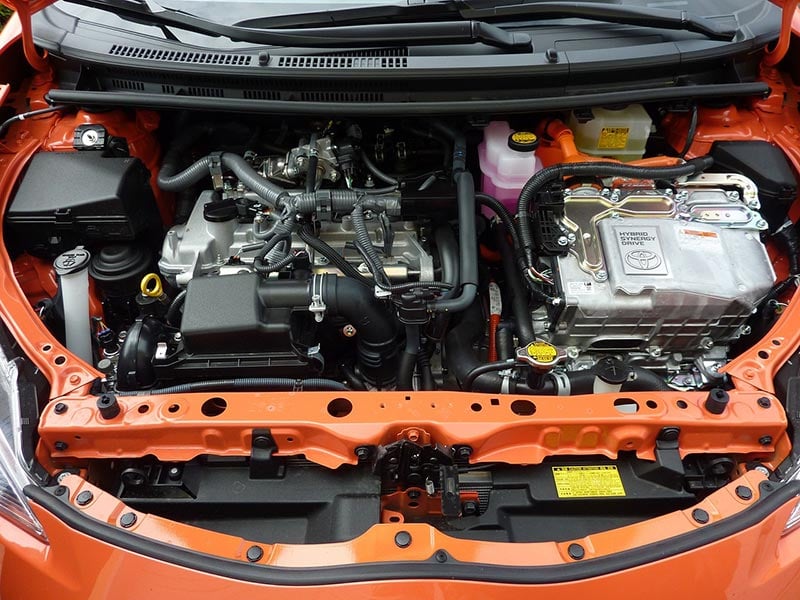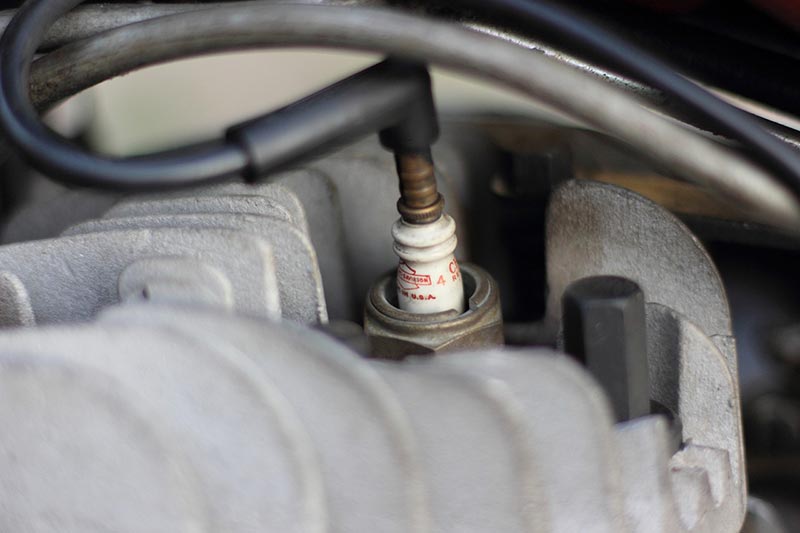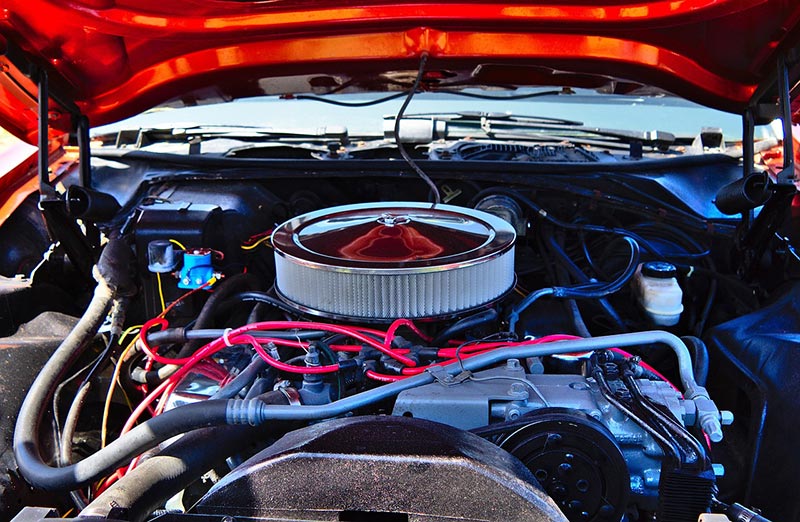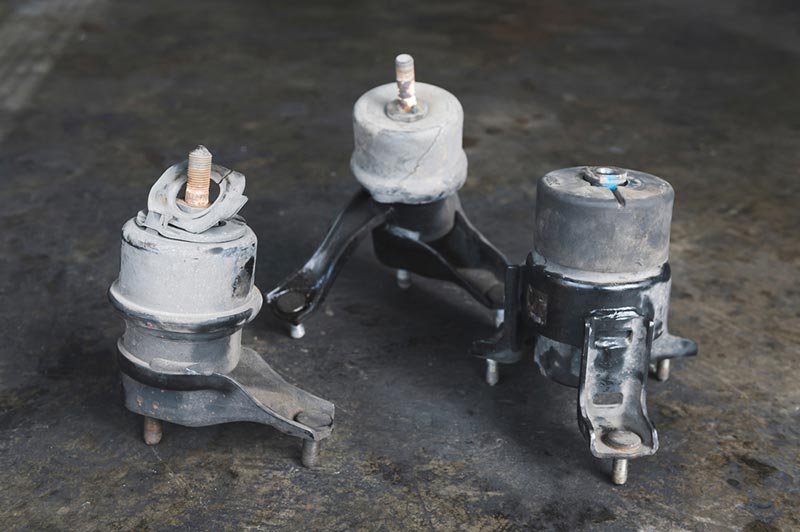Why Is Your Engine Shaking & Vibrating? 5 Typical Reasons
-
- Last updated:

Numerous components begin moving when you start your car, and a low rumble is almost unavoidable. But when the hum turns into a shake and vibrations start finding their way through the steering column, you can bet there’s something amiss under the hood.
If it’s your engine, it’s time for a detour to your nearest mechanic.
A lot can go wrong with an engine, and problems rarely resolve themselves. When you fail to recognize or understand the causes, your car could stop working, and your repair bills will increase exponentially. We’ll help you keep your vehicle running smoothly by explaining some common reasons for a shaking and vibrating engine.

The 5 Reasons Your Engine May Be Shaking & Vibrating
1. Worn Spark Plugs
A spark plug sits at the top of each engine cylinder to initiate the combustion that powers the car. Over time, spark plugs will wear down from typical use and potentially become dirtied with carbon and oil. They will then be more susceptible to misfiring, disrupting the engine’s sequential firing and sapping power from your car. Acceleration will drop, as will fuel economy.
Even worse, faulty spark plugs can leave you stranded, as your engine may not turn over upon startup. If it does start, the engine will shake, rough idle, and likely knock. Your engine’s cylinders and other car components will suffer undue wear and potentially fail faster the longer you leave spark plugs unaddressed.
Spark plug misfiring is one of the most common reasons for a shaking engine but also one of the easiest to prevent. Follow your vehicle manufacturer’s recommendation on swapping them out. Some vehicles may require spark plug changes every 30,000 miles, or they may last as long as 100,000 miles. Spark plugs are cheap, and recognizing the signs early on can save you hundreds of dollars in repairs.

2. Faulty Timing Belt
The timing belt syncs the operation of your engine components, connecting the crankshaft and camshaft to work in harmony. It ensures the cylinder valves open at precisely the right time relative to the position of the piston for efficient operation.
A broken timing belt will cause your engine to overheat and the car to stop working. The valves will not close to regulate intake and exhaust, but the crankshaft will continue rotating. Running at over 1,000 RPMS, it can slam the pistons into the valves, causing substantial damage in the blink of an eye.
Between the damage to the engine and the part itself, recovering from a broken timing belt can cost thousands of dollars. Check for the signs of a failing belt and replace it before it breaks. Along with an activated check engine light, you may notice your engine is shaking and vibrating, rough idling, sluggish, and making a telltale “ticking” noise.
Sometimes, a faulty timing belt won’t warn you with a vibration before it dies. Regular maintenance is crucial. Change your timing belt, whether it’s causing issues or not, every 60,000–100,000 miles. Check your vehicle’s manual for specific instructions.
3. Loose or Damaged Air Intake
The air intake pulls outside air through a filter and sends it to the intake manifold, which disperses it to the cylinders for combustion. Air leaks in the tubes, disconnected or loose hoses, or a dirty air filter will affect the air going into the cylinders. With less air, the engine can’t optimize its compression cycle, limiting your engine’s power.
The engine will vibrate and likely emit strange sputtering sounds. Fuel won’t burn as efficiently, causing carbon buildup to cover your spark plugs quicker and make them misfire. While you may need a mechanic’s help with broken lines, you can help yourself by replacing or regularly cleaning the air filters.

4. Faulty Fuel Injectors
The spark, air, and fuel are the three essential components that must operate in a combustion chamber at a precise time and ratio to ensure efficient engine operation. If your spark plugs are fine and the air intake is secure and undamaged, you may have dirty or faulty fuel injectors to blame for a vibrating engine.
Like spark plugs, fuel injectors can become dirty with combustion byproducts. As carbon or oil clogs the tiny injection tip, it messes up the air/fuel ratio, resulting in poor combustion. You may notice more hard starts and rough idling alongside sluggish engine performance.
5. Damaged Motor Mount
Vehicles use 3–4 motor mounts (often rubber) to keep the engine in place and absorb the vibrations coming from it. They prevent you from feeling the vibrations through the steering wheel and the engine from damaging other components. When they break, the engine loosens and can start shaking violently.
Faulty mounts will cause excessive and often consistent vibration in the engine. You may feel the car lurch when you start it. The ride will be bumpier, and you might hear a variety of clinking and clunking sounds as the engine makes contact with other parts.
A common way to test for damaged mounts is to shift from “drive” to “neutral.” The engine will shake in drive but less so (or not at all) in neutral.

What To Do When the Engine Starts Shaking?
A shaking engine needs immediate attention regardless of the cause. Continuing to drive will only cause the shaking to worsen and potentially damage other parts of your car. At a certain point, your vehicle will not turn on, and you’ll have more repairs to handle.
Unless you’re well-versed in automobiles, take your car to a mechanic immediately. Pop the hood initially to see if there’s anything you can do. An air filter is easy to access, remove, and clean, while a disconnected hose can sometimes be obvious and straightforward to reconnect. In most cases, you’ll save time and aggravation by reaching out to an expert.

Conclusion
Computers in vehicles have come a long way in preventing and even fixing engine issues. But when the check light is on (or worse, flashing), you must intervene immediately. By appreciating the underlying reasons that your engine is shaking and vibrating, you’ll be better prepared when the unexpected happens.
Featured Image Credit: Photoman, Pixabay
Contents

